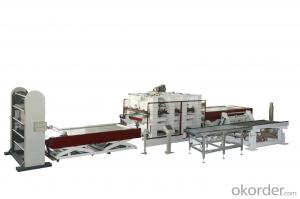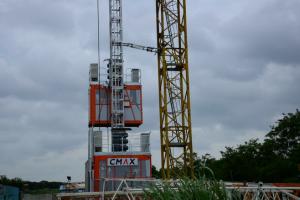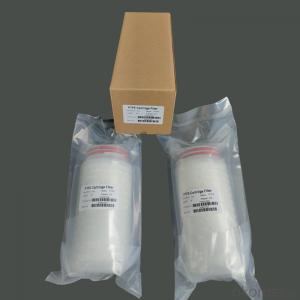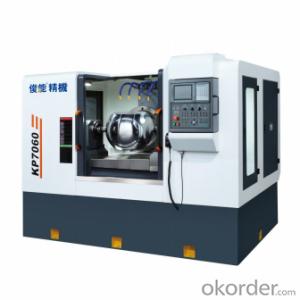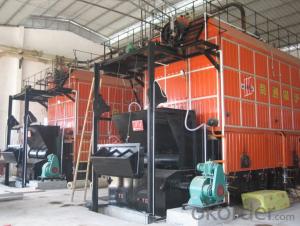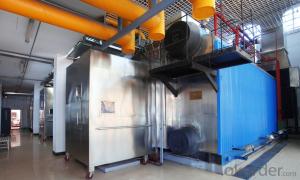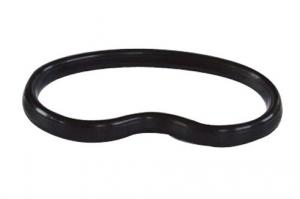Concrete Pump Rubber End Hose with Galvanizing Flange
- Loading Port:
- Shanghai
- Payment Terms:
- TT OR LC
- Min Order Qty:
- 1 PCS
- Supply Capability:
- 1000 PCS/month
OKorder Service Pledge
OKorder Financial Service
You Might Also Like
Product Description:
1. Specification
Concrete Pump Rubber End Hose with Galvanizing Flange1.Size:5 inch
2.Steel hose
3.2 or 4 piles of steel wires for your choose.
Name | Concrete rubber hose; Delivery hose; End hose; Concrete pump hose; Boom hose |
Size | 2"/2.5"/3"/3.5"/4"/4.5"/5"/6"or according to client’s requirement |
Length | 3M,5 or Any length |
Reinforcement | Steel wire, tire cord or fabric |
Hose End | Galvanized, inner wall harden |
Application | Schwing, Putzmeister, Sany, Zoomlion, etc |
2. Application
1.Applacation:delivery concrete
2.Suitable for the various :Schwing, CIFA,PM, Zoomlion ,SANY and so on.
3. Package
Put into containers.
FAQ:
Q1: Why buy Materials & Equipment from OKorder.com?
A1: All products have its ISO certifications, adheres to the highest standards and a commitment to supply chain safety and customer satisfaction.
Q2: How do we guarantee the quality of our products?
A2: We have established an advanced quality management system which conducts strict quality tests at every step, from raw materials to the final product. At the same time, we provide extensive follow-up service assurances as required.
Q3: How soon can we receive the product after purchase?
A3: Within three days of placing an order, we will begin production. The specific shipping date is dependent upon international and government factors, but is typically 10 to 30 workdays.
Q4: If we can produce Concrete Pump Rubber End Hose with Galvanizing Flange according to customers request?
A4: Yes, we can produce ConConcrete Pump Rubber End Hose with Galvanizing Flange according to the difference country situations to make it suitable to the market and customers. We have very professional technical team to make the design.
Q5: How to make a quick resolution for after service?
A5: We have overseas branches all-around of world, If needed, the seller shall dispatch 2 engineers to the buyer's site for supervision of training. The buyer shall make available of necessary facilities &skilled personnel at site for training.
Image:

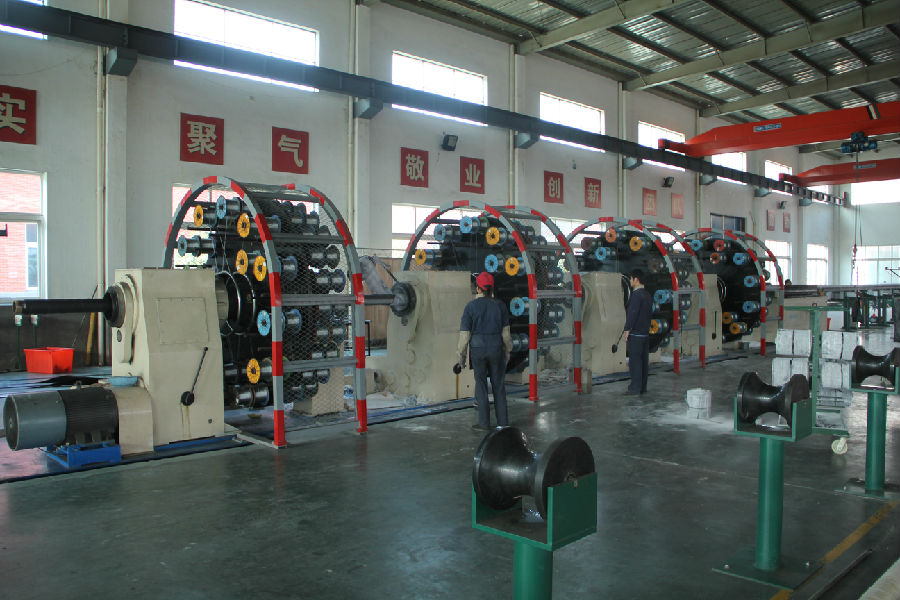
- Q:Which is the best home made concrete pump car?
- The first line is 31 and Zhonglian, the price is expensive, the car is big, the problem is not, and there are many small problems
- Q:Are there any specific guidelines for the installation of control valves or solenoids in concrete pump spare parts?
- Yes, there are specific guidelines for the installation of control valves or solenoids in concrete pump spare parts. Here are some general guidelines to consider: 1. Compatibility: Ensure that the control valves or solenoids you are installing are compatible with the concrete pump spare parts. Check the manufacturer's specifications and guidelines for the appropriate model and size. 2. Proper Positioning: Install the control valves or solenoids in a position that allows for easy access and maintenance. It should be easily visible and reachable for any adjustments or repairs. 3. Mounting: Securely mount the control valves or solenoids to prevent any vibrations or movements during operation. This will ensure the stability and longevity of the components. 4. Electrical Connections: Follow the electrical wiring instructions provided by the manufacturer. Make sure to connect the control valves or solenoids to the appropriate power source and ensure proper grounding to prevent any electrical hazards. 5. Sealing: Apply appropriate sealing materials, such as gaskets or O-rings, to ensure a tight and leak-free connection between the control valves or solenoids and other components. This will prevent any fluid or air leakage. 6. Testing: After installation, it is essential to thoroughly test the functionality of the control valves or solenoids. Check for any leaks, proper operation, and responsiveness to control signals. Any issues should be addressed and resolved before putting the concrete pump into operation. It is important to note that these guidelines are general and may vary depending on the specific manufacturer's recommendations and the design of the concrete pump spare parts. Always refer to the manufacturer's guidelines and instructions for the specific control valves or solenoids being used.
- Q:How can a faulty filter affect the pumping process?
- A faulty filter can impede the pumping process by allowing debris, contaminants, or particles to pass through and clog or damage the pump components. This can result in reduced efficiency, increased wear and tear, decreased flow rates, and potential pump failure.
- Q:What are the different types of concrete pump hopper vibrators?
- On the market, one can find various concrete pump hopper vibrators. Their purpose is to ensure a smooth flow of concrete through the hopper and into the pumping system. 1. Electric Vibrators: The most commonly used hopper vibrators are powered by electricity. They are typically attached to the hopper's side and employ an electric motor to generate vibrations that facilitate the movement of concrete. 2. Pneumatic Vibrators: These vibrators rely on compressed air as their power source and are commonly employed in situations where electricity is not readily accessible. By utilizing air pressure, they create vibrations that aid in the continuous flow of concrete. 3. Hydraulic Vibrators: Larger concrete pumping systems often utilize hydraulic vibrators, which derive their power from hydraulic fluid. These vibrators can be more robust than their electric or pneumatic counterparts, making them suitable for heavy-duty applications. 4. Rotary Vibrators: To move the concrete, these vibrators employ an eccentric weight that spins, resulting in vibrations. They are frequently used when a high frequency of vibration is necessary. 5. Turbine Vibrators: These vibrators employ a turbine mechanism to generate vibrations. They are commonly employed when a low frequency of vibration is desired. 6. Ball Vibrators: These vibrators use a ball housed within a casing to generate vibrations. They are frequently utilized in smaller concrete pumping systems and can be easily mounted onto the hopper. In conclusion, the choice of the most suitable concrete pump hopper vibrator for a specific application depends on various factors, including the size and type of the concrete pumping system, the desired frequency and intensity of vibration, and the availability of power sources.
- Q:What are the different types of concrete pump pistons?
- There are several different types of concrete pump pistons that are commonly used in the construction industry. These include: 1. Single-acting pistons: These pistons have one working side and are used in smaller concrete pumps. They push the concrete out of the cylinder during the forward stroke and rely on gravity to pull the piston back during the return stroke. 2. Double-acting pistons: These pistons have two working sides and are used in larger concrete pumps. They push the concrete out during the forward stroke and pull it back during the return stroke, increasing the efficiency of the pumping process. 3. S-tube pistons: These pistons are shaped like an S and are commonly used in trailer-mounted concrete pumps. They help to control the flow of concrete by directing it through a series of valves and pipes. 4. Rock valve pistons: These pistons are designed specifically for pumping concrete with larger aggregates. They have a rugged design that can handle the more abrasive nature of these types of materials. 5. Gate valve pistons: These pistons use a gate valve system to control the flow of concrete. They are commonly used in high-pressure applications and offer precise control over the amount of concrete being pumped. Overall, the type of concrete pump piston used will depend on the specific requirements of the construction project, including the size of the pump, the type of concrete being pumped, and the desired flow rate and pressure.
- Q:How does a concrete pump agitator motor prevent concrete from settling?
- A concrete pump agitator motor prevents concrete from settling by continuously rotating and agitating the mixture, ensuring that the aggregate, cement, and water remain well-mixed. This agitation action prevents the heavier components from sinking and settling at the bottom, maintaining a homogeneous consistency throughout the concrete.
- Q:Are there any specific cleaning procedures for concrete pump spare parts?
- Yes, there are specific cleaning procedures for concrete pump spare parts. It is recommended to clean the parts with water and a mild detergent to remove any dirt or debris. It is important to avoid using harsh chemicals or abrasive materials that may damage the parts. Additionally, regular maintenance and lubrication of the parts is essential to ensure their optimal performance and longevity.
- Q:Can I get spare parts for concrete pump boom arms and pipes?
- Concrete pump boom arms and pipes can definitely be replaced with spare parts. Many suppliers and manufacturers specialize in providing these spare parts for concrete pumps. These spare parts include boom arms, pipes, couplings, gaskets, seals, and other components necessary for proper concrete pump function. To find these spare parts, you can conduct an online search. Numerous websites and online stores offer a wide range of options. It is crucial to purchase spare parts from reputable suppliers to ensure their quality and compatibility with your specific concrete pump model. Moreover, local dealers and distributors also stock spare parts for concrete pumps. You can inquire with them or visit their stores to find the necessary spare parts for your boom arms and pipes. Efficient and safe operation of a concrete pump requires regular maintenance and replacement of worn-out or damaged parts. By investing in high-quality spare parts, you can extend the lifespan of your equipment and ensure optimal performance.
- Q:How can a faulty water pump affect the concrete pumping operation?
- A faulty water pump can have several negative effects on a concrete pumping operation. Firstly, a water pump is responsible for supplying water that is used to mix the concrete and maintain its proper consistency. If the water pump is faulty and not functioning correctly, it may not be able to supply the required amount of water, resulting in the concrete mix being too dry or not well-mixed. This can lead to a poor-quality concrete mix that is difficult to pump and may not set properly, compromising the structural integrity of the concrete. Additionally, a faulty water pump can affect the efficiency and productivity of the concrete pumping operation. If the pump is not working efficiently, it may take longer to mix and deliver the concrete, causing delays in the construction process. This can lead to increased costs and potential disruptions to project timelines. Furthermore, a faulty water pump can also impact the safety of the concrete pumping operation. Adequate water supply is essential for preventing the concrete from overheating during the pumping process. If the water pump fails to supply enough water, the concrete can heat up rapidly, leading to a phenomenon called thermal cracking. Thermal cracking weakens the concrete and can cause it to fail prematurely, posing a safety risk to workers and the overall structure. In summary, a faulty water pump can negatively impact a concrete pumping operation by resulting in poor-quality concrete mixes, decreased efficiency and productivity, and potential safety hazards. It is crucial to regularly inspect and maintain water pumps to ensure their proper functioning and prevent any detrimental effects on the concrete pumping process.
- Q:What are the fittings of concrete pump?
- Fine stone concrete pump parts are: main oil cylinder, concrete cylinder, three-phase asynchronous motor, main oil pump, hopper, S pipe, electric distribution cabinet, hand oil pump, piston
1. Manufacturer Overview |
|
|---|---|
| Location | |
| Year Established | |
| Annual Output Value | |
| Main Markets | |
| Company Certifications | |
2. Manufacturer Certificates |
|
|---|---|
| a) Certification Name | |
| Range | |
| Reference | |
| Validity Period | |
3. Manufacturer Capability |
|
|---|---|
| a)Trade Capacity | |
| Nearest Port | |
| Export Percentage | |
| No.of Employees in Trade Department | |
| Language Spoken: | |
| b)Factory Information | |
| Factory Size: | |
| No. of Production Lines | |
| Contract Manufacturing | |
| Product Price Range | |
Send your message to us
Concrete Pump Rubber End Hose with Galvanizing Flange
- Loading Port:
- Shanghai
- Payment Terms:
- TT OR LC
- Min Order Qty:
- 1 PCS
- Supply Capability:
- 1000 PCS/month
OKorder Service Pledge
OKorder Financial Service
Similar products
New products
Hot products
Related keywords
















